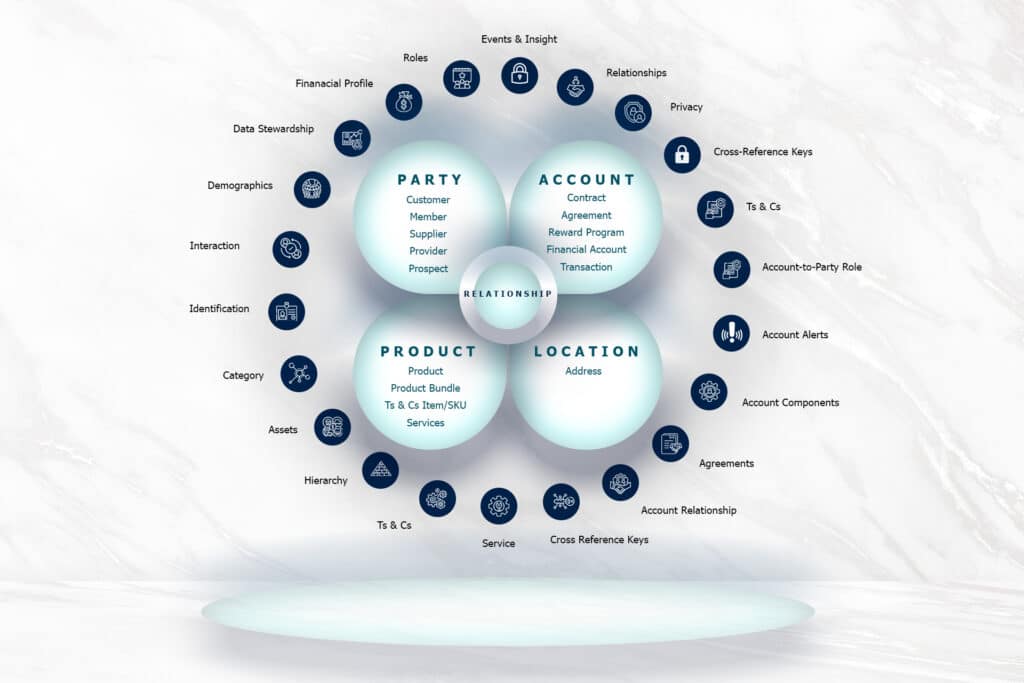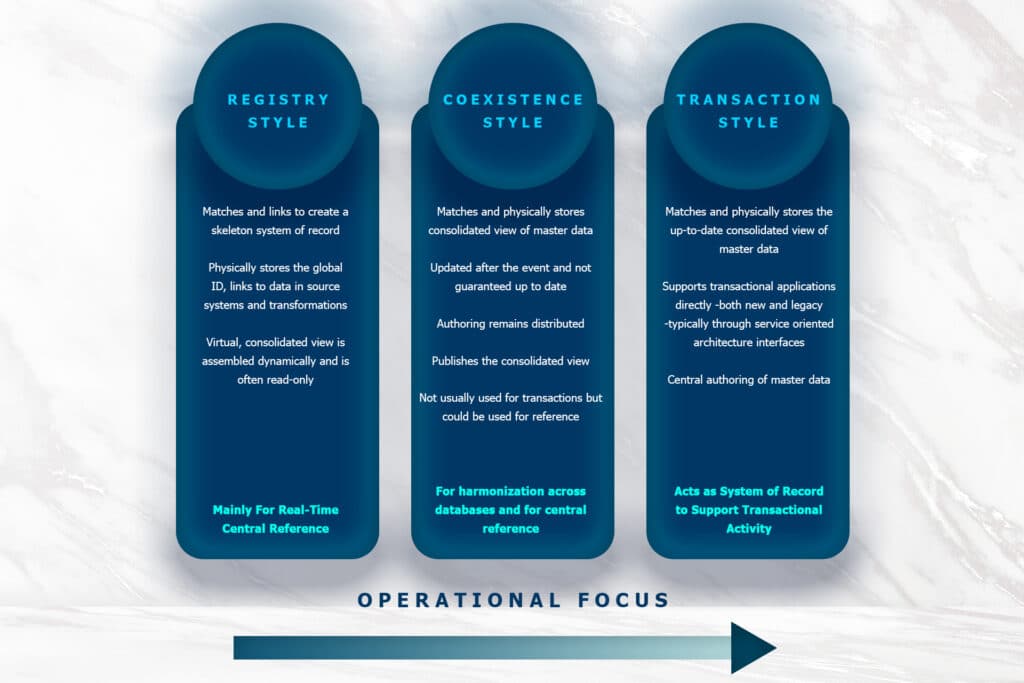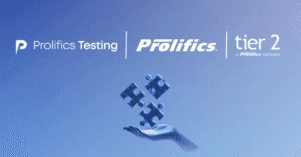There is an old Chinese proverb: “The best time to plant a tree was 20 years ago. The next best time is today.”
The same can be said for Master Data Management (MDM).
“MDM is a journey, it’s not a project,” said Mario Bourassa, Prolifics’ Practice Lead for MDM. “It’s not a point in time. It’s something that starts, and the end goal is usually several years and several phases down the road.”
At its simplest, MDM is the ability to consolidate, from different sources, data and information related to a specific item into one “golden record” that represents the whole truth for that item throughout the enterprise.
How does MDM help? Companies fighting to stay competitive are undergoing a digital transformation – part of which is updating systems that trap data, don’t communicate well, and perpetuate data errors.
As relayed by one of our clients: “We weren’t sure of our data’s quality, where it came from, where it was going, who had access to it and how it was being used.” MDM will help:
- Create one, integrated and unified view of your data – shared by all systems and people
- Get data into the hands of those who need it – when, where and how they need it
What is Master Data?
Master Data is the high-value, core information used to support critical business processes across your enterprise. It is information about customers, suppliers, partners, products, materials, employees, accounts and more – master data is at the heart of every business transaction, application and decision.
Mario Bourassa is Prolifics’ Practice Lead for MDM. “All data is important, but not all data is master data. Master data is really the data for which there should be only one record of it in the entire organisation. For example, take a product that a company sells. There should be only one ‘golden record’ for a given product – its specifications and so on – that should be the only one ‘truth’ for that given product.”
Bourassa contrasts master data with transactional data. While also important, transactional data is, obviously, different for each transaction. Each transaction draws from and uses master data. For example, a specific customer (one record) buys a specific product (one record) from a specific store location (one record) that generates the sales transaction data.
The problem is that master-type data gets into an organisation from different sources in different ways. Information can get siloed in different systems, data entry errors can happen, data can be replicated or shared to different areas or departments where it’s then changed. Is Katie Brown who shops at a retailer’s mall store the same person as Kathleen Brown who shops the same retailer online?
Once multiple systems and variances arise, that master data is harder to manage, and the golden record becomes more and more elusive.

Paths to the Golden Record
In beginning the MDM journey, most organisations find themselves in one of two more common architectural styles, “registry,” or the more advanced “coexistence.” The ultimate MDM destination architecture is labeled “transaction” style.
Bourassa said, “When a client starts their master data journey, it’s good for them to be aware of these architectures, as they would most likely be either in the registry or coexistent style. The difference really is sometimes a little bit fuzzy anyway. What we at Prolifics highly stress is working with customers to create a strategy and a roadmap for their MDM. So, in your strategy and your roadmap, you need to talk about how you’re going to start here, and how you’re going to evolve and move ahead to transactional.”
Registry
- Each record, with its attributes, exists in a source system
- Those records can be assembled dynamically by MDM to form a single entity in a composite view
- After that initial configuration, users continue to change data on the source systems
- The changes to the source system data are reflected in the entity composite view that is stored in the MDM database
- Just enough information to match and provide linkages between similar and matching records are loaded
- It then provides a trusted view of this information to the user on demand
- However, a single view of the entity is provided but modifications to master data continue to be made on the source systems
Coexistence
- An entity with its attributes starts in a source system.
- Those entities are centralised by MDM to form a single record in the MDM database
- That single record represents the person, organisation or object
- But, even after data from the source systems is consolidated within the MDM database, business users still change the data in the source systems
- Often, in a registry style, the MDM database can be enriched with data attributes for which the MDM database is the system of record.
Transaction
- In the Transaction style, master data is entered and authored in MDM and pushed to the source systems
- All information relevant to providing a single view is now stored in the MDM repository
- MDM becomes the system of record for centrally managing master data – the golden records – from that point forward

“When you’re starting in your MDM journey, typically you would start on the left-hand side, trying to achieve the right-hand side. The right-hand side is talked about a lot. It’s very difficult. But it’s the ultimate goal. This is where you want to be.” – Mario Bourassa.
“So, in order to start an MDM program, you need to sit down, step back, and plan it. That’s what the MDM strategy is about,” said Bourassa. “And if you achieve the Transaction architectural style, that means that you do have one system that is the system of record for all of the records for a given domain, and that every change in that record goes in that system first, and then gets propagated everywhere else.”
MDM in Action- Prolifics Client Success Story
This national bank knew it had a problem – huge amounts of data spread across more than 1,500 systems. The bank wasn’t sure of the data’s quality, where it came from, where it was going, who had access to it and how it was being used. Knowing that previous modernization initiatives had failed, the bank made a bold goal: “Become the best digital bank in the industry through a transactional master data management (MDM) platform for client data.” Read what happened here.
Tech Advancements and MDM
Organisations working with MDM are starting to incorporate artificial intelligence and machine learning (AI/ML) into the process. A company can use AI/ML to help improve the data inside MDM, and ease the work of maintaining that data, by basically having the system learn how to manage data. As you correct your data and as you improve your data, you could use AI/ML to learn new rules to better manage the data.
MDM uses a lot of relationships, so many organisations are going toward graphical databases, which are better for data retrieval and the relationship analysis of highly connected data. Related to that, organisations are moving more and more data to the cloud, including master data (which used to be a taboo subject for the cloud) and the MDM itself.
Integrating Data Governance with the MDM Strategy
For Prolifics, data governance is a holistic approach to implementing practices, processes, roles, controls, and metrics to ensure the formal management of data – all designed to treat data as the valuable asset it is. Effective data governance creates a top-down guidance that steers all efforts.
The data governance and MDM go hand-in-hand together. A well-thought master data project should have data governance included in it. Data governance is basically going to dictate what you’re going to put in your master data, how you’re going to manage it, how you’re going to handle events like exceptions, errors and corrections.
“So, if you omit data governance, you’re going to be missing a piece of MDM,” said Bourassa. “It needs to be part of a well thought master data strategy, because that’s what dictates what you need to implement in terms of rules, in terms of enforcement, in your master data management repository.
Data governance will help make sure that everybody has a good understanding of what is master data and what’s in the master data, and how you use it. So, it gives a common understanding across your organisation.”
So, is it your time for Master Data Management? Prolifics can help.
Prolifics experience in MDM has led us to five key elements of a successful MDM process:
-
- Successful MDM work is done incrementally – don’t try to “boil the ocean” out of the gate
- Identify low hanging fruit – find a compelling business reason and start with a point solution
- Time to implement is critical – you need small successes quickly
- Plan to promote successes internally – building interest, support and momentum
- Establish an enterprise governance committee – since no one line of business “owns” everything
“I don’t think I’ve encountered a single customer that came to me with the exact same reason for pursuing a new MDM engagement,” said Bourassa. “Very often, clients come to us with their tactical perspective – with data symptoms. Eventually, you boil it down to the broad topic of data inconsistency, and for the company to move forward, do more and grow bigger, they’ll need to have a different architecture for their data – and MDM comes into play.
“And that’s when you’d like to elevate the customer’s conversation to the strategic, to show it’s worth sitting down and having one of our Prolifics workshops with us. We’ll get to the bigger picture and the related issues. It doesn’t mean that the customer needs to commit to solve all of those issues. It doesn’t mean that the customer needs to fulfill the entire strategy in the short term. But it always helps to have a bigger picture and a roadmap to get there.
“Our workshops generate a roadmap to solve the bigger strategic problems. Again, it doesn’t mean a need to solve everything. We could start together by solving some tactical issues – the symptoms. But the roadmap is helpful even in implementing tactical solutions – so you don’t have to redo it several years down the road.”
Prolifics provides MDM customers with:
- An implementation roadmap that minimises project and organisational risk while accelerating value realisation
- A deep expertise in the strengths and weaknesses of various architectural approaches
- A true understanding of the organisational impacts of mastering many types of data
- Our developed series of best practices that accelerate time to value while reducing project risks
- A solution aligned with the business drivers, taking into consideration the current organisational framework
- Our goal of on time and on budget delivery








